Step back in time with SIXT.VN and rediscover the glamorous 80’s air travel aesthetic! We’ll explore the unique charm of this era and offer tips for reliving the magic on your next Vietnamese adventure. From vintage-inspired travel itineraries to seamless airport transfers and stylish hotel bookings, SIXT.VN makes it easy to embrace the nostalgia. Let’s explore the allure of retro aviation and uncover the timeless appeal of travel during this iconic decade, including travel planning assistance and reliable travel information.
1. What Defines the 80’s Air Travel Aesthetic?
The 80’s air travel aesthetic is a unique blend of luxury, futurism, and bold design choices. It’s characterized by spacious cabins, stylish uniforms, gourmet meals, and a sense of adventure.
- Bold Colors and Patterns: Think vibrant hues, geometric shapes, and eye-catching designs.
- Luxurious Comfort: Plush seating, ample legroom, and attentive service were hallmarks of the era.
- Gourmet Dining: Exquisite meals served on fine china with elegant silverware elevated the in-flight experience.
- Glamorous Attire: Flight attendants sported sophisticated uniforms that reflected the fashion trends of the decade.
- Sense of Adventure: Air travel was seen as a luxurious and exciting experience, not just a means of transportation.
2. How Did Airline Menu Designs Reflect the 80’s Air Travel Aesthetic?
Airline menus from the 1980s were more than just lists of food and beverages; they were carefully crafted works of art that reflected the airline’s brand and the overall travel experience.
- Artistic Covers: Many airlines invested in beautifully designed menu covers featuring illustrations, photography, or graphic designs that evoked a sense of luxury and adventure.
- High-Quality Printing: Menus were often printed on high-quality paper stock with elegant typography, enhancing the perception of quality.
- Detailed Descriptions: Food and beverage descriptions were often elaborate and enticing, highlighting the ingredients, preparation methods, and culinary inspiration behind each dish.
- Wine Lists: Extensive wine lists curated by sommeliers showcased the airline’s commitment to providing a world-class dining experience.
- Souvenir Value: Some menus were designed as keepsakes, allowing passengers to remember their flight and the exceptional service they received.
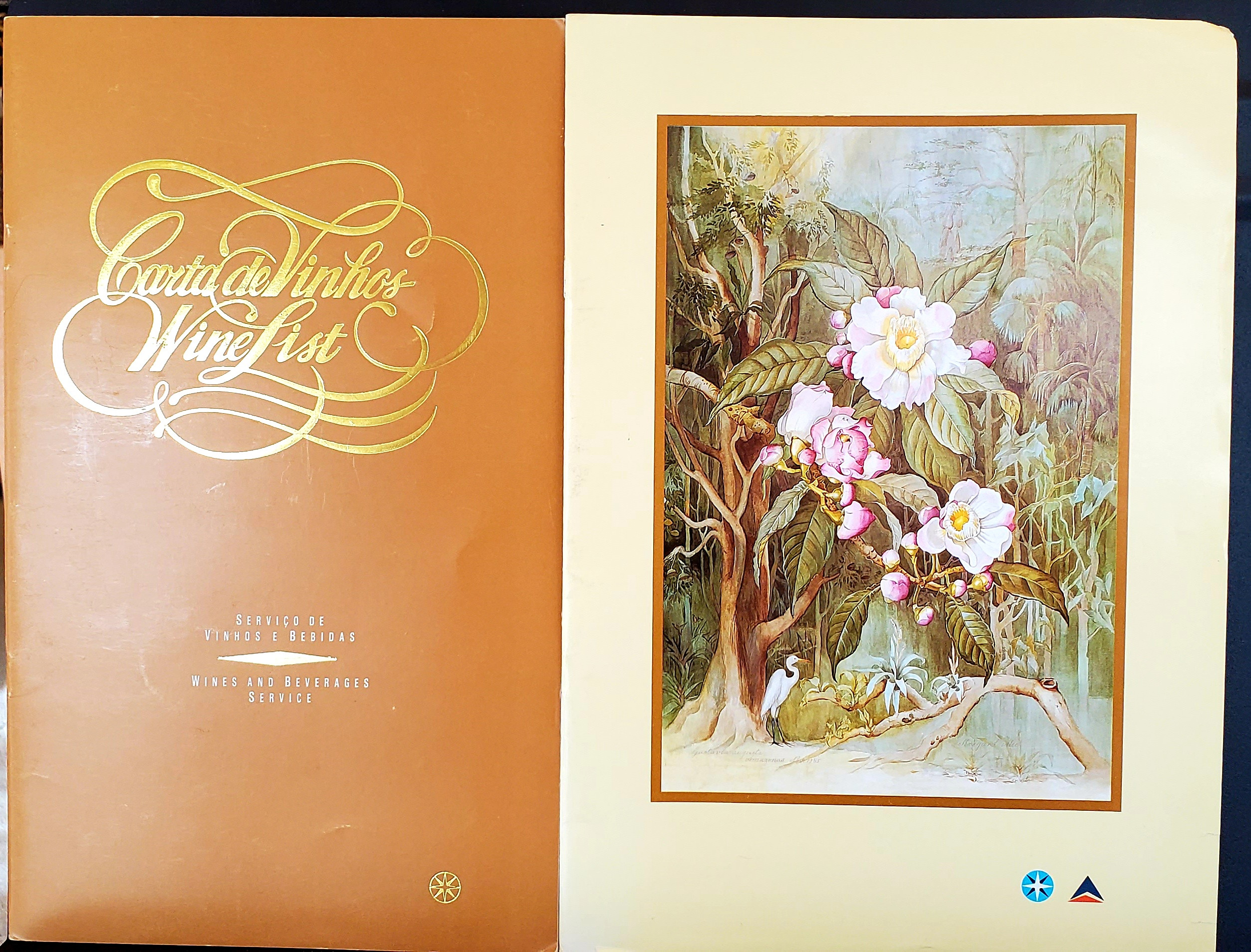 An example of a First Class menu from Varig in the early 90s, showcasing a partnership with Delta.
An example of a First Class menu from Varig in the early 90s, showcasing a partnership with Delta.
3. Which Airlines Best Embodied the 80’s Air Travel Aesthetic?
Several airlines during the 1980s were known for their exceptional service, luxurious amenities, and distinctive style, making them prime examples of the era’s air travel aesthetic.
- Singapore Airlines: Renowned for its impeccable service, elegant cabin design, and gourmet cuisine.
- Cathay Pacific: Celebrated for its stylish menus, luxurious amenities, and attentive cabin crew.
- Japan Airlines: Known for its understated elegance, refined service, and commitment to Japanese hospitality.
- Swissair: Praised for its sophisticated ambiance, gourmet dining, and attention to detail.
- British Airways: Recognized for its classic style, luxurious amenities, and emphasis on comfort.
4. What Were the Key Fashion Trends Among Passengers in the 80’s?
The 1980s were a decade of bold fashion choices, and air travelers embraced the trends with enthusiasm.
- Power Suits: Business travelers often sported tailored suits with padded shoulders and bold colors.
- Designer Logos: Prominent displays of designer logos on clothing and accessories were a status symbol.
- Bright Colors: Neon hues, pastel shades, and vibrant color combinations were popular choices.
- Statement Jewelry: Large, eye-catching jewelry pieces, such as chunky necklaces and oversized earrings, added flair to outfits.
- High Heels: Women often wore high heels to complete their polished and sophisticated travel look.
5. How Did Technology Shape the 80’s Air Travel Experience?
While the 1980s may seem like a distant era in terms of technology, several key innovations shaped the air travel experience during this time.
- Wider Use of Jet Bridges: Jet bridges became more common, allowing passengers to board and deplane directly from the terminal without having to walk across the tarmac.
- Improved In-Flight Entertainment: The introduction of personal cassette players and improved audio systems enhanced the in-flight entertainment options.
- Electronic Flight Instruments: The adoption of electronic flight instrument systems (EFIS) in cockpits improved safety and efficiency.
- Computerized Reservation Systems: Computerized reservation systems (CRS) made it easier for travel agents and airlines to manage bookings and inventory.
- Mobile Phones: The emergence of mobile phones, although bulky and expensive, began to transform communication for travelers.
6. What Made First Class Service in the 80’s So Exceptional?
First Class service during the 1980s was an unparalleled experience, characterized by lavish amenities, personalized attention, and a sense of exclusivity.
- Spacious Seating: Passengers enjoyed wider seats with ample legroom, often with the ability to recline into a lie-flat position.
- Gourmet Dining: Multi-course meals prepared by top chefs were served on fine china with elegant silverware.
- Premium Beverages: A wide selection of premium wines, champagnes, and spirits was available.
- Personalized Service: Dedicated flight attendants provided attentive and personalized service throughout the flight.
- Exclusive Lounges: First Class passengers had access to exclusive airport lounges with comfortable seating, complimentary refreshments, and other amenities.
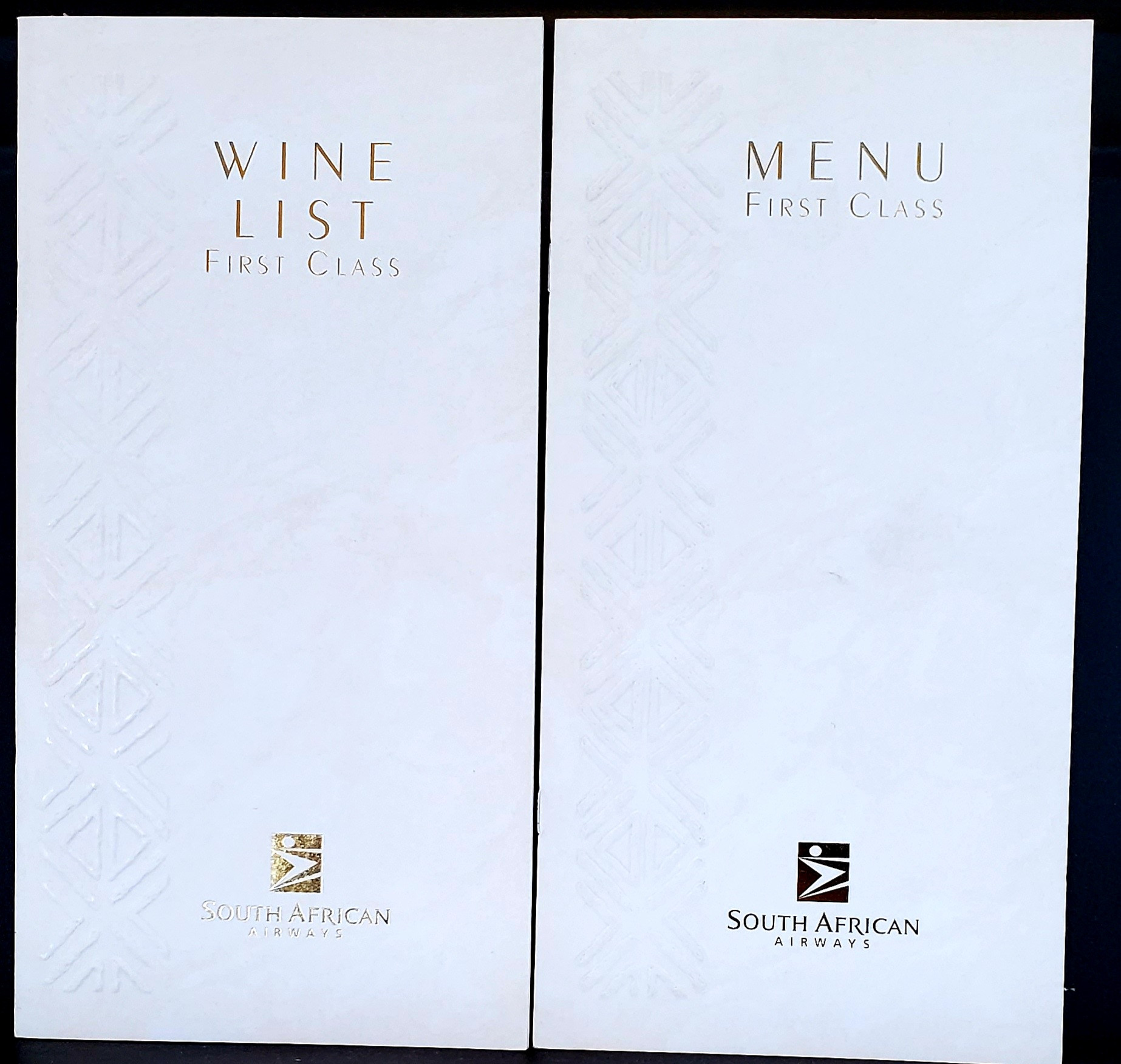 A South African Airways First Class menu from the 80s and early 90s, showcasing elegance and class.
A South African Airways First Class menu from the 80s and early 90s, showcasing elegance and class.
7. What Were Some Popular Destinations for Air Travelers in the 80’s?
The 1980s saw a rise in international travel, with several destinations becoming particularly popular among air travelers.
- London: A hub for business and leisure travel, London offered a blend of history, culture, and entertainment.
- Paris: Renowned for its romantic ambiance, fashion, and culinary scene, Paris remained a top destination for travelers.
- New York City: A global center for finance, culture, and the arts, New York City attracted visitors from around the world.
- Tokyo: With its blend of traditional and modern culture, Tokyo offered a unique and exciting travel experience.
- Hong Kong: A vibrant and cosmopolitan city, Hong Kong was a major hub for business and tourism in Asia.
8. How Can You Recreate the 80’s Air Travel Aesthetic Today?
While the golden age of air travel may be behind us, you can still incorporate elements of the 80’s air travel aesthetic into your modern travel experiences.
- Dress the Part: Embrace 80s-inspired fashion with bold colors, power suits, and statement jewelry.
- Choose Airlines with Premium Service: Look for airlines known for their exceptional service, comfortable seating, and gourmet dining options.
- Indulge in Airport Lounge Access: Treat yourself to access to airport lounges with comfortable seating, complimentary refreshments, and other amenities.
- Create a Retro Playlist: Compile a playlist of 80s music to listen to during your flight.
- Pack a Vintage-Inspired Travel Kit: Include items like a classic camera, a stylish travel journal, and a retro-inspired toiletry bag.
9. What Role Did Advertising Play in Shaping the 80’s Air Travel Aesthetic?
Advertising played a significant role in shaping the perception of air travel during the 1980s.
- Glamorous Imagery: Airlines used glamorous imagery in their advertisements to portray air travel as a luxurious and aspirational experience.
- Focus on Comfort and Service: Advertisements emphasized the comfort, convenience, and personalized service offered by airlines.
- Celebrity Endorsements: Some airlines used celebrity endorsements to enhance their brand image and appeal to a wider audience.
- Emphasis on Exotic Destinations: Advertisements showcased exotic destinations to entice travelers to explore the world.
- Brand Building: Airlines invested in building strong brand identities through consistent messaging and visual elements in their advertising campaigns.
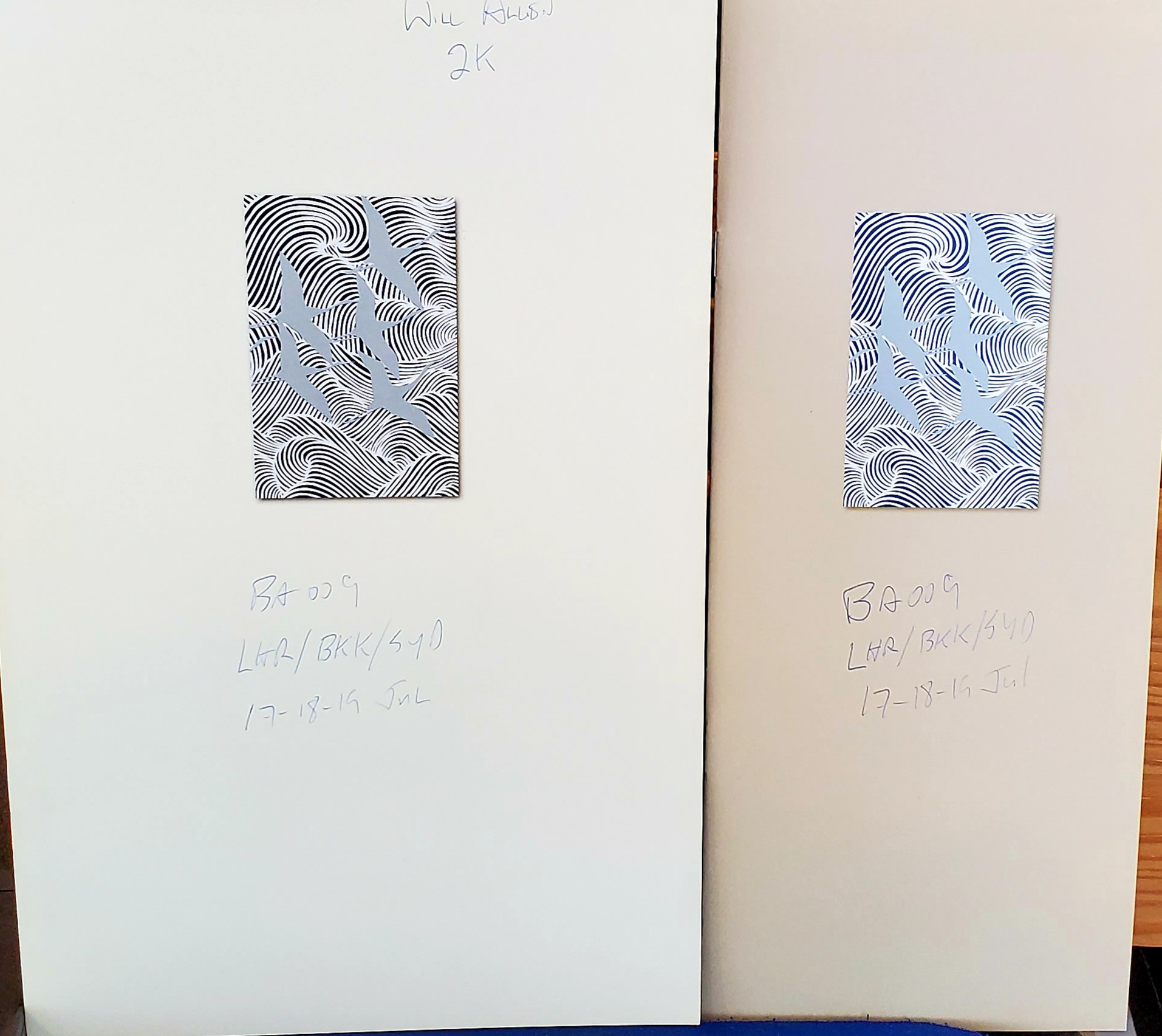 A British Airways menu from BA009 London-Bangkok-Sydney, showcasing elegance and sophistication.
A British Airways menu from BA009 London-Bangkok-Sydney, showcasing elegance and sophistication.
10. How Did the End of the Cold War Impact Air Travel in the Late 80’s?
The end of the Cold War in the late 1980s had a profound impact on air travel, leading to increased international routes and greater accessibility to destinations around the world.
- New Routes and Destinations: The opening of Eastern Europe and the former Soviet Union led to the establishment of new air routes and increased access to previously restricted destinations.
- Increased Competition: The deregulation of the airline industry in some countries led to increased competition among airlines, resulting in lower fares and more choices for travelers.
- Growth in International Travel: The easing of travel restrictions and the opening of new markets fueled a surge in international travel.
- Expansion of Airline Networks: Airlines expanded their networks to connect new destinations and accommodate the growing demand for international travel.
- Cultural Exchange: Increased air travel facilitated greater cultural exchange and understanding between people from different countries.
11. What Kind of Aircraft Were Iconic to the 80’s Air Travel Aesthetic?
Certain aircraft models became synonymous with the 80’s air travel aesthetic, representing the pinnacle of aviation technology and passenger comfort of the time.
- Boeing 747: The “Queen of the Skies” was a symbol of long-haul travel, offering spacious cabins and luxurious amenities.
- Boeing 767: This wide-body aircraft was popular for both domestic and international routes, known for its fuel efficiency and passenger comfort.
- Airbus A300: As one of Airbus’s first aircraft, the A300 was commonly used on shorter to medium-haul routes, providing a comfortable and reliable travel experience.
- McDonnell Douglas DC-10: The DC-10 was a tri-jet aircraft used on long-haul routes, known for its distinctive design and spacious cabins.
- Lockheed L-1011 TriStar: The L-1011 was another tri-jet aircraft that offered a smooth and quiet ride, popular among passengers.
12. How Did In-Flight Entertainment Systems Affect the 80’s Air Travel Aesthetic?
In-flight entertainment systems in the 1980s, while not as advanced as today, significantly impacted the passenger experience and contributed to the overall aesthetic of air travel.
- Personal Cassette Players: Passengers could bring their own cassette players and listen to their favorite music during the flight.
- Audio Programs: Airlines offered audio programs with a selection of music, comedy, and news channels.
- Movie Screenings: Movies were often screened on large screens in the cabin, providing a communal viewing experience.
- Headphones: Passengers were provided with basic headphones to listen to the audio programs and movie screenings.
- Magazines and Newspapers: Airlines offered a selection of magazines and newspapers for passengers to read during the flight.
13. What Safety Regulations Influenced the 80’s Air Travel Experience?
Several safety regulations implemented during the 1980s shaped the air travel experience, enhancing passenger safety and security.
- Increased Security Measures: Following several high-profile incidents, security measures at airports were increased, including stricter screening procedures and baggage checks.
- Smoke Detectors: Smoke detectors were installed in aircraft lavatories to prevent onboard fires.
- Emergency Exit Row Seating: Regulations regarding emergency exit row seating were implemented to ensure that passengers seated in these rows were able to assist in the event of an emergency.
- Life Vests: Passengers were required to be provided with life vests for flights over water.
- Cabin Crew Training: Cabin crew training was enhanced to improve their ability to handle emergency situations and provide assistance to passengers.
14. How Did Airline Alliances Begin to Form in the Late 80’s?
The late 1980s saw the beginning of airline alliances, a trend that would reshape the aviation industry in the decades to come.
- Code-Sharing Agreements: Airlines began to form code-sharing agreements, allowing them to sell tickets on each other’s flights and expand their networks.
- Joint Marketing Initiatives: Airlines collaborated on joint marketing initiatives to promote their services and reach a wider audience.
- Frequent Flyer Partnerships: Airlines partnered to offer frequent flyer benefits to their customers, allowing them to earn and redeem miles on multiple airlines.
- Shared Airport Facilities: Airlines shared airport facilities, such as lounges and check-in counters, to reduce costs and improve efficiency.
- Enhanced Connectivity: Airline alliances enhanced connectivity for passengers, allowing them to travel seamlessly to destinations around the world.
15. What Unique Souvenirs Were Available During the 80’s Era of Air Travel?
During the 1980s era of air travel, passengers had the opportunity to collect unique souvenirs that captured the essence of their travel experiences.
- Airline Amenity Kits: First and Business Class passengers often received amenity kits containing toiletries, eye masks, and other travel essentials, often branded with the airline’s logo.
- Playing Cards: Many airlines offered decks of playing cards featuring their logo or images of their aircraft.
- Postcards: Passengers could purchase postcards featuring images of the airline’s aircraft or destinations served.
- Airline Models: Small-scale models of the airline’s aircraft were popular souvenirs.
- Menus: As mentioned earlier, some passengers collected menus as keepsakes of their in-flight dining experiences.
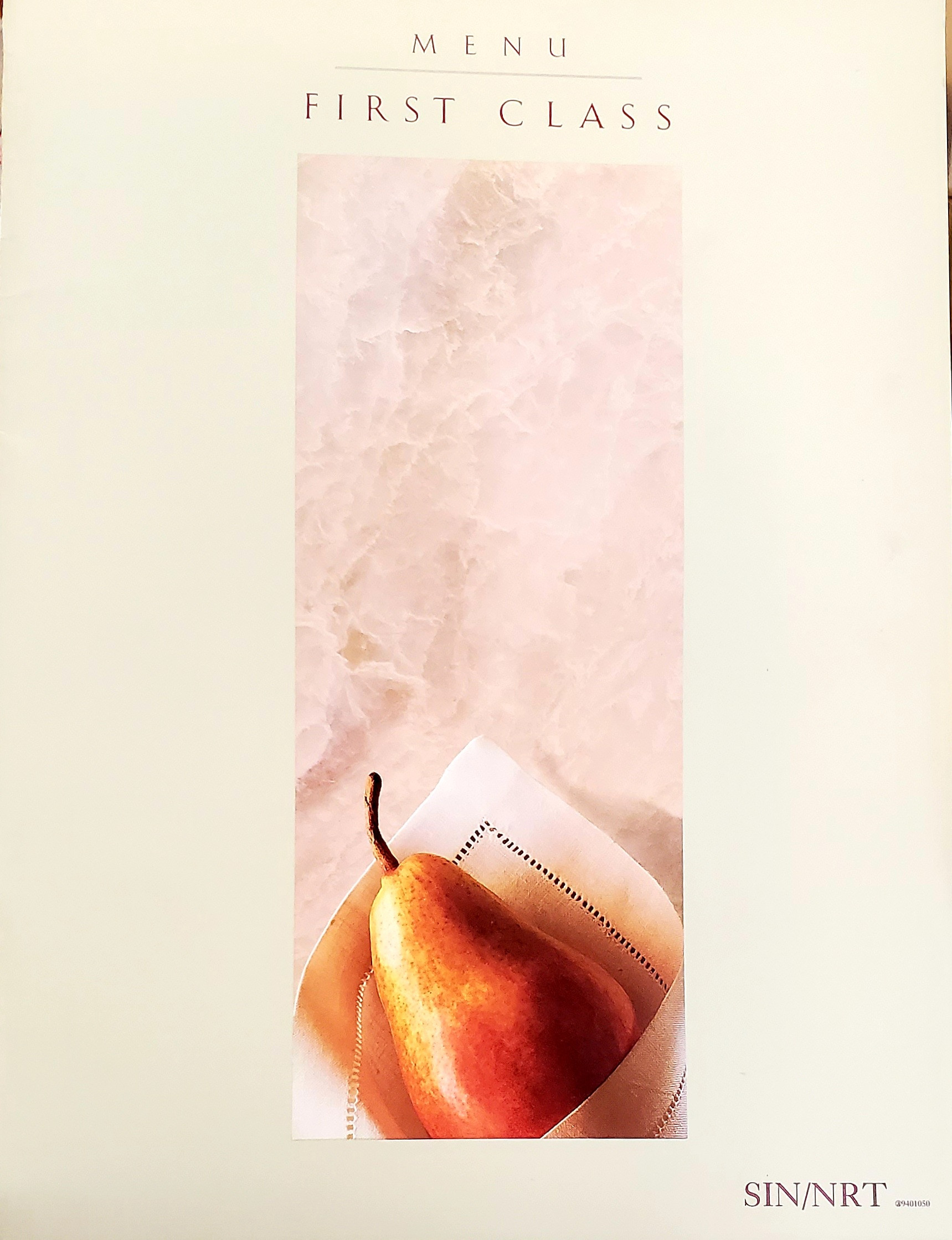 A Northwest First Class menu from a flight between Singapore and Narita, showcasing a pretty design.
A Northwest First Class menu from a flight between Singapore and Narita, showcasing a pretty design.
16. How Did Airport Design Complement the 80’s Air Travel Aesthetic?
Airport design during the 1980s often reflected the futuristic and optimistic spirit of the decade, complementing the overall aesthetic of air travel.
- Modern Architecture: Airports featured modern architectural designs with clean lines, geometric shapes, and open spaces.
- Use of Color: Bright colors and bold patterns were often incorporated into airport interiors.
- Artwork and Installations: Airports showcased artwork and installations to create a more welcoming and engaging environment.
- Spacious Lounges: Airport lounges offered comfortable seating, complimentary refreshments, and other amenities for premium passengers.
- Duty-Free Shopping: Duty-free shops offered a wide selection of luxury goods and souvenirs.
17. How Did the Cost of Air Travel Compare in the 80’s Versus Today?
While it might seem counterintuitive, air travel was often more expensive in the 1980s than it is today, especially when adjusted for inflation.
- Higher Fares: Airfares were generally higher in the 1980s due to less competition and higher operating costs.
- Limited Discount Options: Discounted fares and promotional offers were less common than they are today.
- Fuel Costs: Fluctuations in fuel costs could significantly impact airfares.
- Regulation: Government regulation of the airline industry in some countries kept fares artificially high.
- Inflation: When adjusted for inflation, airfares in the 1980s were significantly higher than they are today.
18. How Did Cultural Trends Influence the 80’s Air Travel Experience?
Cultural trends of the 1980s significantly influenced the air travel experience, shaping everything from in-flight entertainment to fashion and dining.
- Pop Music: Popular music from the 1980s was often featured in in-flight entertainment programs.
- Fashion: As mentioned earlier, fashion trends of the 1980s influenced passenger attire and airline uniforms.
- Movies: Blockbuster movies from the 1980s were screened on in-flight entertainment systems.
- Dining Trends: Culinary trends of the 1980s influenced the menus and dining options offered on airlines.
- Technology: The growing popularity of personal electronic devices, such as cassette players, impacted in-flight entertainment options.
19. How Did Political Events Impact Air Travel in the 80’s?
Political events during the 1980s had a notable impact on air travel, influencing security measures, routes, and international relations.
- Terrorist Attacks: Terrorist attacks on airlines led to increased security measures at airports and on aircraft.
- The Iran-Iraq War: The Iran-Iraq War disrupted air travel in the Middle East and led to rerouting of flights.
- The Lockerbie Bombing: The bombing of Pan Am Flight 103 over Lockerbie, Scotland, led to stricter security measures and increased scrutiny of airline safety practices.
- The End of the Cold War: As mentioned earlier, the end of the Cold War led to the opening of new routes and increased access to previously restricted destinations.
- Sanctions and Embargos: Sanctions and embargos imposed on certain countries impacted air travel to and from those destinations.
20. How Can SIXT.VN Help You Experience the Best of Modern and Retro Travel in Vietnam?
SIXT.VN seamlessly blends the charm of retro aesthetics with the convenience of modern travel to create unforgettable experiences in Vietnam.
- Curated Travel Itineraries: Explore Vietnam with vintage-inspired travel itineraries that capture the essence of the 80s.
- Airport Transfer Services: Enjoy seamless airport transfers with comfortable and reliable vehicles.
- Hotel Bookings: Stay in stylish hotels that evoke the retro charm of the 80s.
- Tour Packages: Discover Vietnam’s hidden gems with expertly crafted tour packages.
- Personalized Travel Assistance: Receive personalized travel assistance from our team of experienced travel consultants.
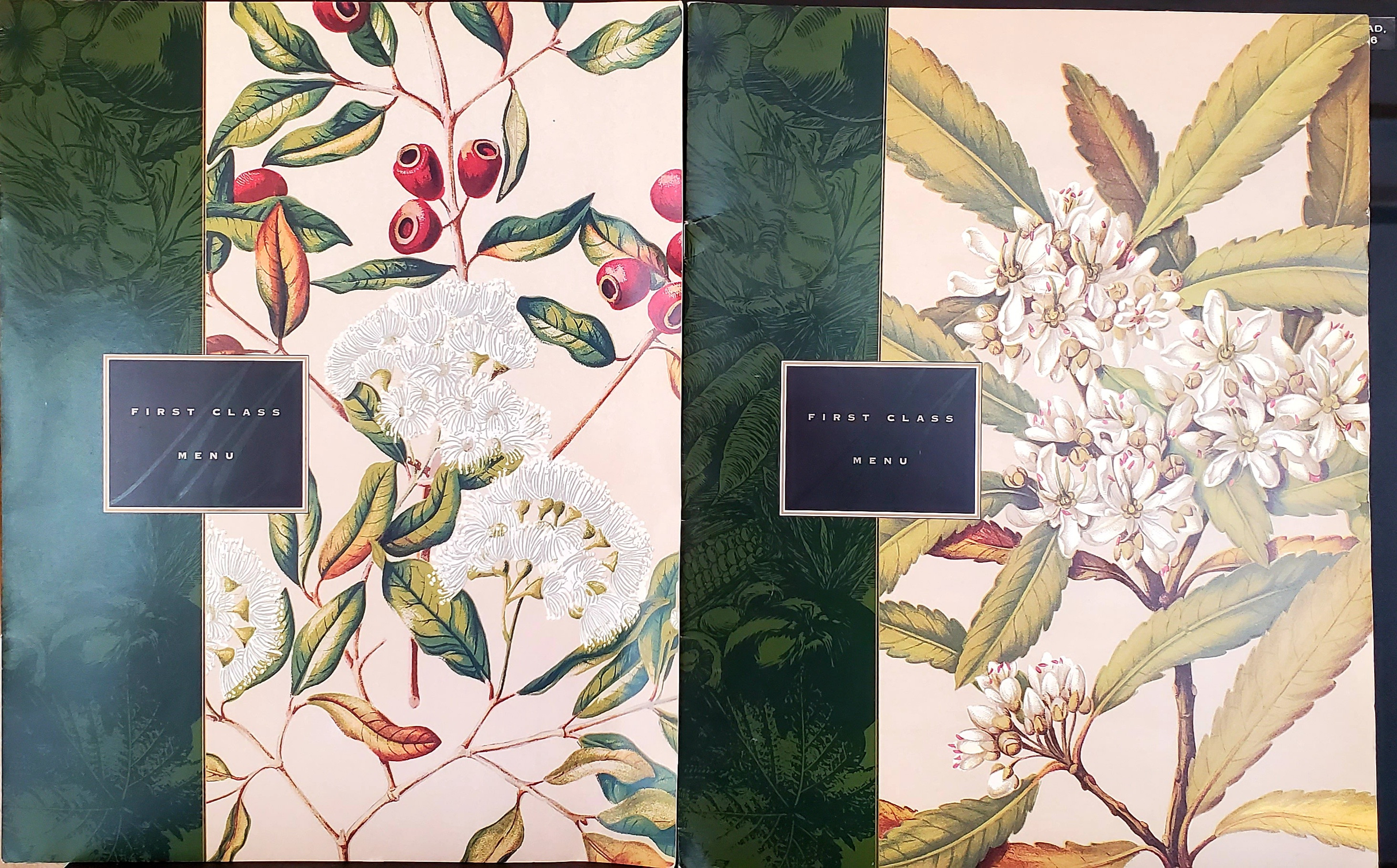 An Air New Zealand menu from a flight between Sydney and Los Angeles, showcasing a gracious host on long-haul flights.
An Air New Zealand menu from a flight between Sydney and Los Angeles, showcasing a gracious host on long-haul flights.
21. What Vietnamese Destinations Capture the Essence of the 80’s Aesthetic?
Several Vietnamese destinations offer a unique blend of historical charm and retro vibes, perfect for travelers seeking to experience the essence of the 80s aesthetic.
- Hanoi: Explore the Old Quarter with its colonial architecture and bustling street life, reminiscent of a bygone era.
- Ho Chi Minh City: Discover the city’s historical landmarks and vibrant nightlife, capturing the energy of the 80s.
- Hoi An: Wander through the ancient town with its lantern-lit streets and traditional architecture, offering a glimpse into Vietnam’s rich cultural heritage.
- Da Lat: Visit the hill station with its French colonial villas and scenic landscapes, evoking a sense of nostalgia.
- Saigon: Enjoy the vibrant nightlife and cosmopolitan atmosphere of Saigon, reminiscent of the 80s.
22. How Did the Rise of Business Travel Influence the 80’s Air Travel Aesthetic?
The rise of business travel in the 1980s significantly influenced the air travel aesthetic, leading to increased demand for premium services and amenities.
- Increased Demand for First and Business Class: Business travelers sought out premium seating options with more space and comfort.
- Enhanced Airport Lounges: Airlines invested in enhancing their airport lounges to cater to the needs of business travelers.
- Improved In-Flight Productivity: Airlines offered amenities such as in-flight telephones and work spaces to help business travelers stay productive during their flights.
- Frequent Flyer Programs: Frequent flyer programs were introduced to reward business travelers for their loyalty.
- Corporate Travel Agreements: Airlines established corporate travel agreements with companies to secure business travel bookings.
23. What Were Some of the Most Innovative In-Flight Services Introduced in the 80’s?
The 1980s saw the introduction of several innovative in-flight services that enhanced the passenger experience.
- In-Flight Telephones: Passengers could make telephone calls from their seats using in-flight telephones.
- Personal Entertainment Systems: Some airlines introduced personal entertainment systems with small screens and a selection of movies and TV shows.
- Gourmet Meal Options: Airlines offered gourmet meal options prepared by top chefs.
- Premium Wine Selections: Airlines curated premium wine selections to complement their in-flight meals.
- Amenity Kits: First and Business Class passengers received amenity kits containing toiletries and other travel essentials.
24. How Did Deregulation of the Airline Industry Impact the 80’s Air Travel Aesthetic?
The deregulation of the airline industry in the United States and other countries had a significant impact on the 1980s air travel aesthetic.
- Increased Competition: Deregulation led to increased competition among airlines, resulting in lower fares and more choices for travelers.
- New Airlines: New airlines entered the market, offering innovative services and amenities.
- Frequent Flyer Programs: Frequent flyer programs became more popular as airlines sought to attract and retain customers.
- Hub-and-Spoke Systems: Airlines adopted hub-and-spoke systems to improve efficiency and connectivity.
- Focus on Cost Control: Airlines focused on cost control to remain competitive, leading to changes in service and amenities.
25. What Lasting Legacy Did the 80’s Air Travel Aesthetic Leave on Modern Aviation?
The 1980s air travel aesthetic left a lasting legacy on modern aviation, influencing everything from cabin design to in-flight service and marketing.
- Emphasis on Comfort and Service: The emphasis on comfort and service that characterized the 1980s air travel aesthetic continues to influence modern aviation.
- Innovation in In-Flight Entertainment: The innovations in in-flight entertainment introduced in the 1980s paved the way for the advanced entertainment systems we have today.
- Frequent Flyer Programs: Frequent flyer programs remain a popular way for airlines to reward their loyal customers.
- Premium Cabin Design: The design of premium cabins continues to be influenced by the luxurious aesthetics of the 1980s.
- Marketing and Branding: The marketing and branding strategies employed by airlines in the 1980s continue to influence how airlines promote their services today.
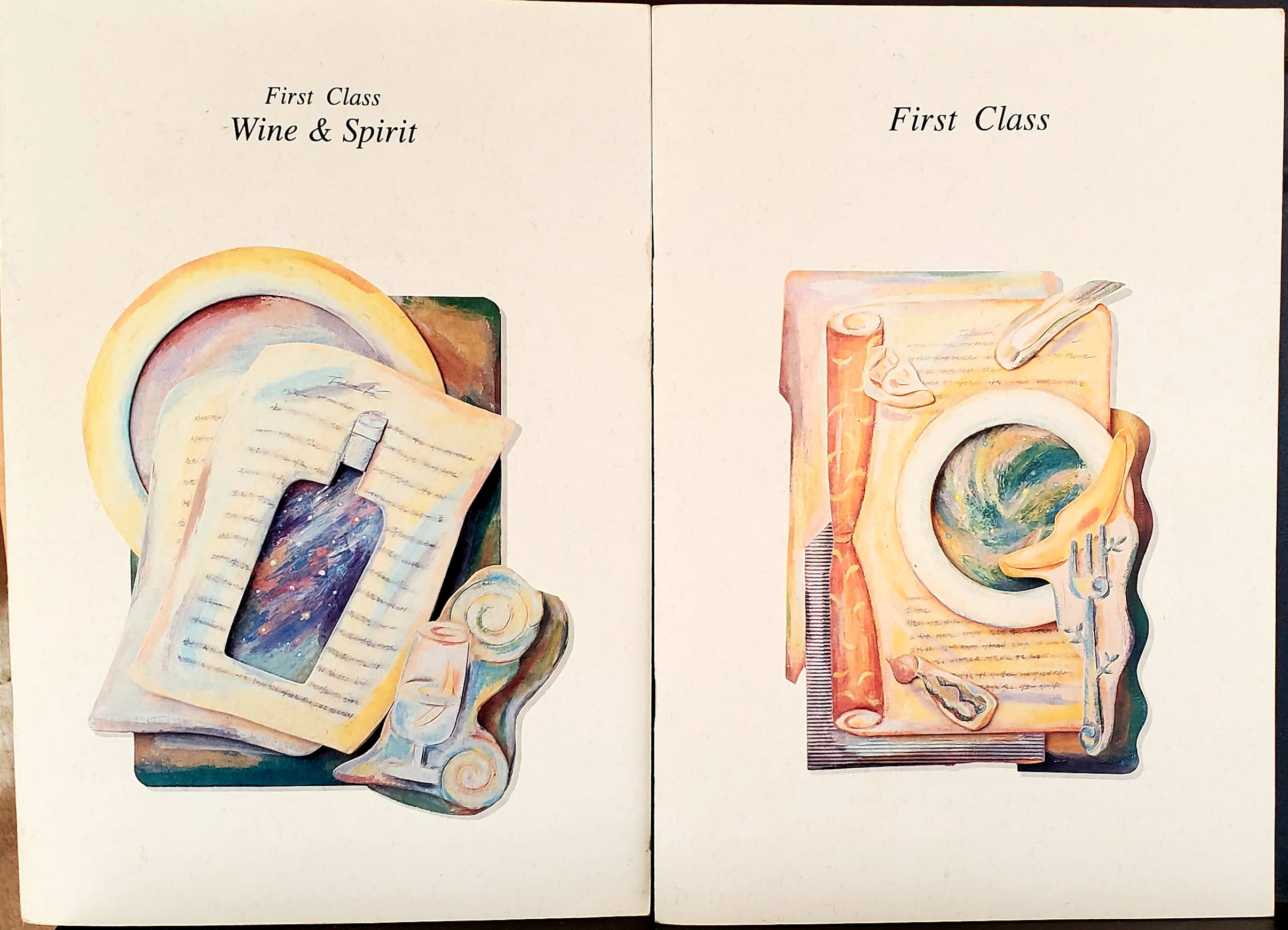 An Asiana menu from a flight between L.A. and Seoul, showcasing unforgettable flights and loyal customers.
An Asiana menu from a flight between L.A. and Seoul, showcasing unforgettable flights and loyal customers.
26. What Safety Advancements Defined Air Travel in the 80s?
The 1980s marked a period of significant advancements in air travel safety, contributing to a more secure flying experience.
- TCAS (Traffic Collision Avoidance System): The introduction of TCAS helped prevent mid-air collisions by providing pilots with alerts about nearby aircraft.
- Windshear Detection Systems: These systems helped pilots detect and avoid dangerous windshear conditions during takeoff and landing.
- Improved Fire Safety: Advancements in fire-resistant materials and fire suppression systems enhanced cabin safety.
- Enhanced Security Measures: Stricter security measures at airports, including baggage screening and passenger checks, were implemented to prevent terrorist attacks.
- CRM (Crew Resource Management) Training: CRM training improved communication and coordination among flight crews, reducing the risk of human error.
27. How Can You Experience the 80’s Air Travel Vibe in Vietnam Today?
You can capture the 80’s air travel vibe during your Vietnam adventure with SIXT.VN through thoughtful planning and immersive experiences.
- Vintage-Inspired Accommodation: Choose hotels or guesthouses with retro decor and furnishings.
- Explore Historical Sites: Visit historical sites and museums to learn about Vietnam’s rich cultural heritage.
- Sample Local Cuisine: Indulge in traditional Vietnamese cuisine at local restaurants and markets.
- Attend Cultural Events: Attend cultural events and festivals to experience Vietnam’s vibrant traditions.
- Travel in Style: Dress in 80s-inspired fashion to fully immerse yourself in the retro vibe.
28. What Were the Signature Color Palettes of the 80’s Air Travel Aesthetic?
The 1980s air travel aesthetic was characterized by bold and vibrant color palettes that reflected the optimism and energy of the decade.
- Neon Colors: Neon hues such as pink, green, and yellow were popular choices for accents and details.
- Pastel Shades: Pastel shades such as pink, blue, and lavender were used to create a soft and romantic ambiance.
- Metallic Accents: Gold and silver accents added a touch of luxury and glamour.
- Bold Contrasts: Bold contrasts between colors such as black and white or red and blue were used to create a dynamic and eye-catching look.
- Earthy Tones: Earthy tones such as brown, beige, and olive green were used to create a sense of warmth and comfort.
29. What were some popular airlines that went out of business that defined the 80’s?
The 1980s, despite its glamour, saw several airlines that defined the era cease operations due to various economic and competitive pressures.
- Pan Am (Pan American World Airways): Once the largest international airline in the US, Pan Am ceased operations in 1991 due to financial difficulties.
- Eastern Air Lines: A major US carrier, Eastern Air Lines struggled with labor disputes and financial issues before shutting down in 1991.
- Braniff International Airways: Known for its stylish branding and colorful aircraft, Braniff declared bankruptcy in 1982.
- People Express Airlines: This low-cost carrier disrupted the industry in the early 80s but eventually merged with Continental Airlines in 1987.
- Midway Airlines: Midway Airlines operated from Chicago Midway International Airport and ceased operations in 1991.
30. How did cabin crew uniforms add to the 80’s air travel aesthetic?
Cabin crew uniforms in the 1980s were integral to the overall air travel aesthetic, reflecting the fashion trends and style of the decade.
- Bold Colors and Patterns: Uniforms often featured bright colors, geometric patterns, and eye-catching designs.
- Tailored Silhouettes: Uniforms were typically tailored to create a polished and professional look.
- Shoulder Pads: Shoulder pads were a common feature in women’s uniforms, adding structure and style.
- Accessories: Accessories such as scarves, hats, and gloves completed the uniform ensemble.
- Airline Branding: Uniforms incorporated the airline’s logo and branding elements to reinforce its identity.
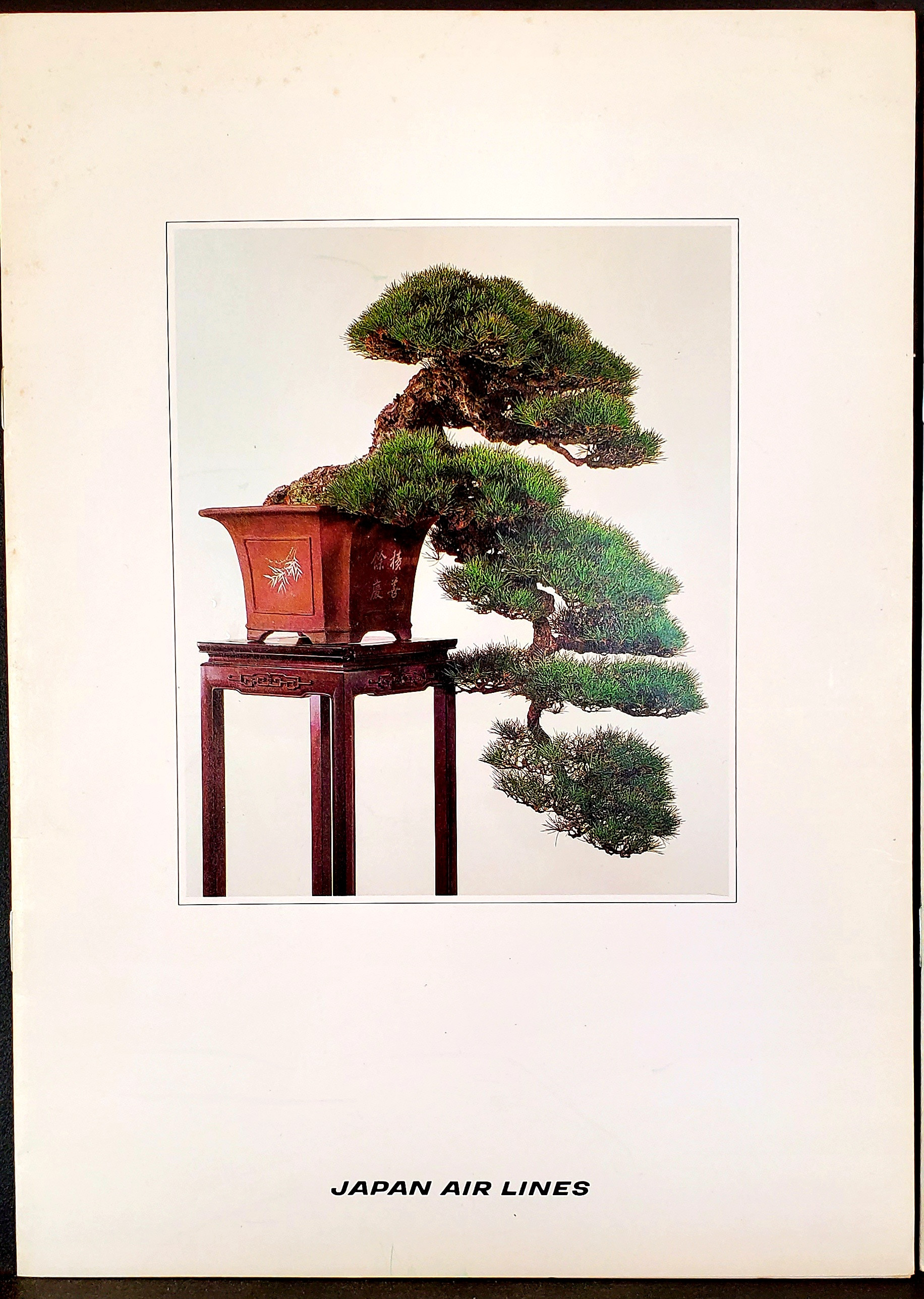 A Japan Airlines menu showcasing understated panache and polish, especially in the front cabin.
A Japan Airlines menu showcasing understated panache and polish, especially in the front cabin.
FAQ about the 80’s Air Travel Aesthetic
-
What made 80’s air travel special?
The 80’s air travel was a blend of luxury, futurism, and bold design, creating a unique and memorable experience. Spacious cabins, stylish uniforms, and gourmet meals were hallmarks of the era, making air travel an exciting adventure. -
Which airlines are known for embodying the 80’s aesthetic?
Singapore Airlines, Cathay Pacific, Japan Airlines, Swissair, and British Airways were known for their exceptional service, luxurious amenities, and distinctive style during the 1980s. -
How did technology shape the 80’s air travel experience?
Innovations like jet bridges, improved in-flight entertainment, electronic flight instruments, and computerized reservation systems enhanced the air travel experience in the 80s, making it more convenient and efficient. -
What were some popular destinations for air travelers in the 80’s?
London, Paris, New York City, Tokyo, and Hong Kong were popular destinations for air travelers in the 1980s, attracting visitors from around the world with their unique cultural and business offerings. -
How can I recreate the 80’s air travel aesthetic today?
You can recreate the 80s air travel aesthetic by dressing in 80s-inspired fashion, choosing airlines with premium service, indulging in airport lounge access, creating a retro playlist, and packing a vintage-inspired travel kit. -
How did advertising influence the 80’s air travel aesthetic?
Advertising played a significant role in shaping the perception of air travel in the 80s by using glamorous imagery, focusing on comfort and service, featuring celebrity endorsements, and emphasizing exotic destinations. -
What impact did the end of the Cold War have on air travel in the late 80’s?
The end of the Cold War led to increased international routes, greater accessibility to destinations, increased competition among airlines, and a surge in international travel, transforming the aviation industry. -
What kind of aircraft were iconic to the 80’s air travel aesthetic?
The Boeing 747, Boeing 767, Airbus A300, McDonnell Douglas DC-10, and Lockheed L-1011 TriStar were iconic aircraft that defined the 80s air travel aesthetic, representing the pinnacle of aviation technology and passenger comfort. -
How did in-flight entertainment systems affect the 80’s air travel aesthetic?
In-flight entertainment systems, including personal cassette players, audio programs, and movie screenings, significantly impacted the passenger experience and contributed to the overall aesthetic of air travel in the 80s. -
What safety regulations influenced the 80’s air travel experience?
Increased security measures, smoke detectors, emergency exit row seating regulations, and enhanced cabin crew training shaped the air travel experience in the 80s, enhancing passenger safety and security.
Relive the magic of the 80’s air travel aesthetic with SIXT.VN. Let us help you plan your dream trip to Vietnam with vintage-inspired itineraries, seamless airport transfers, and stylish hotel bookings. Contact us today to start your unforgettable journey!
Address: 260 Cau Giay, Hanoi, Vietnam
Hotline/Whatsapp: +84 986 244 358
Website: SIXT.VN



